Explore, Develop, and Pilot New Strategies
CITL helps instructors develop innovative projects and empowers them to harness the transformative potential of technology in education.
Discover the cutting-edge technologies and collaborative opportunities that are revolutionizing teaching and learning within CITL. For all experience levels, join us in our endeavors of groundbreaking education solutions and success stories.
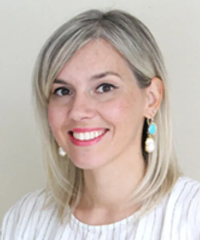 Chiara Vincenzi: Fashion Design, VR, AI, & 3D – Oh, My!
Chiara Vincenzi: Fashion Design, VR, AI, & 3D – Oh, My!
Chiara Vincenzi is an Italian fashion designer, textile artist, and educator. Before moving to the United States, she worked as a fashion designer, product designer, and graphic designer at multiple world-class fashion companies in Italy, where she gained extensive experience in the fashion design field. After moving to the United States, she continued her professional practice as designer consultant for fashion start-ups, focusing her work on the development of sustainable and ethical apparel lines. In 2017 she joined the School of Art + Design at the University of Illinois Urbana-Champaign, where she currently holds a position as clinical assistant professor.
Chiara has worked with CITL’s Innovation Studio staff on numerous projects over the years, but the most high-profile projects involve virtual reality fashion illustration using Open Brush, fashion design ideation using generative AI tools like Midjourney and Adobe Firefly, and sustainable fashion design using CLO3D.
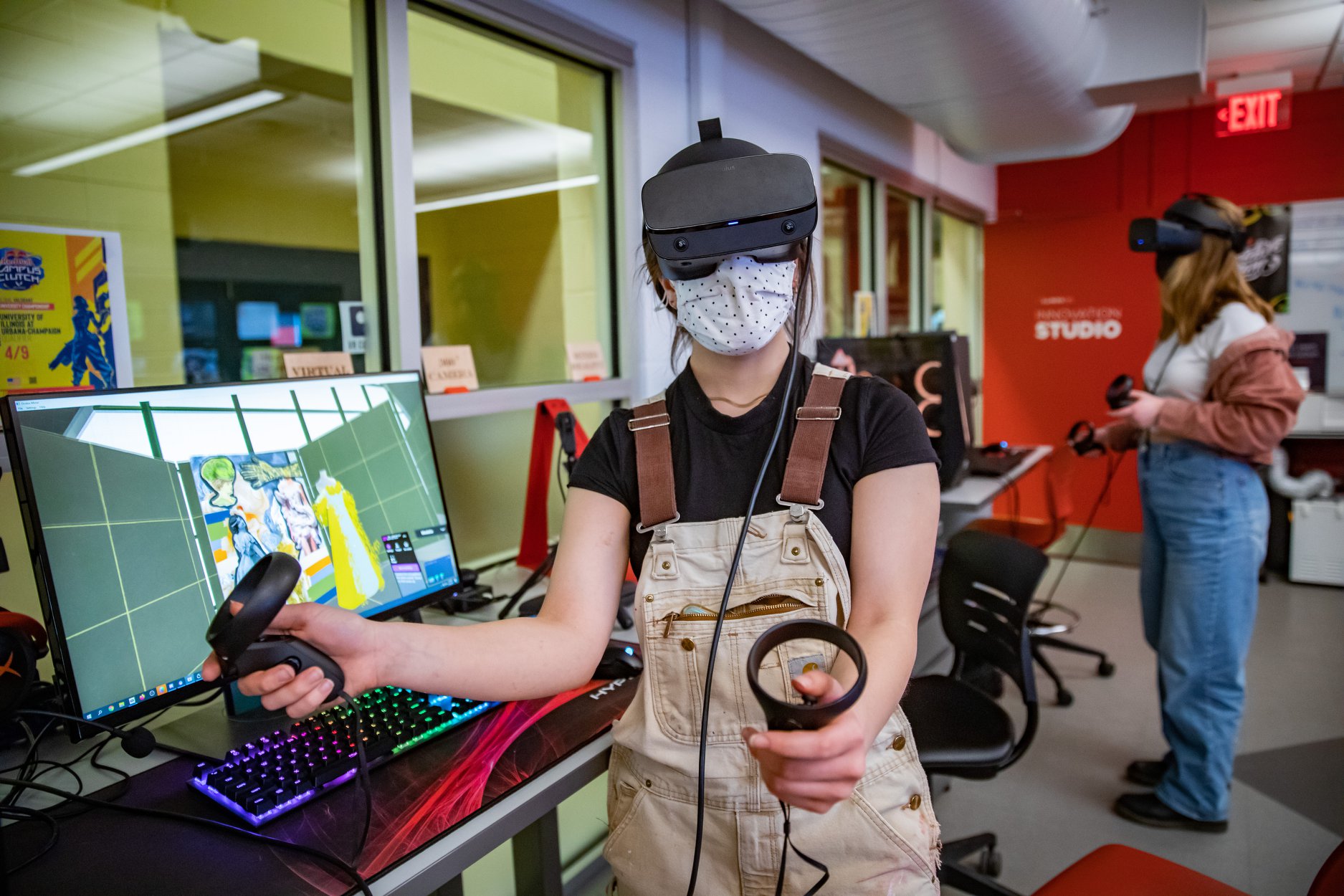
Students in the fashion illustration class learn to communicate their ideas through concept boards, collection plates, and garment drawings, starting with traditional techniques and progressing to digital methods using industry-standard software. In 2019, a new two-week Fashion Project was introduced, allowing students to explore virtual garment design using Tilt Brush (later replaced by Open Brush), a virtual reality software developed by Google. This project includes three three-hour, small group, hands-on sessions dedicated to designing a high couture dress and culminates in a critique phase, where students receive feedback on their virtual creations. The Innovation Studio has served as a collaborative space where students can experiment with digital modeling and fashion design throughout the years.
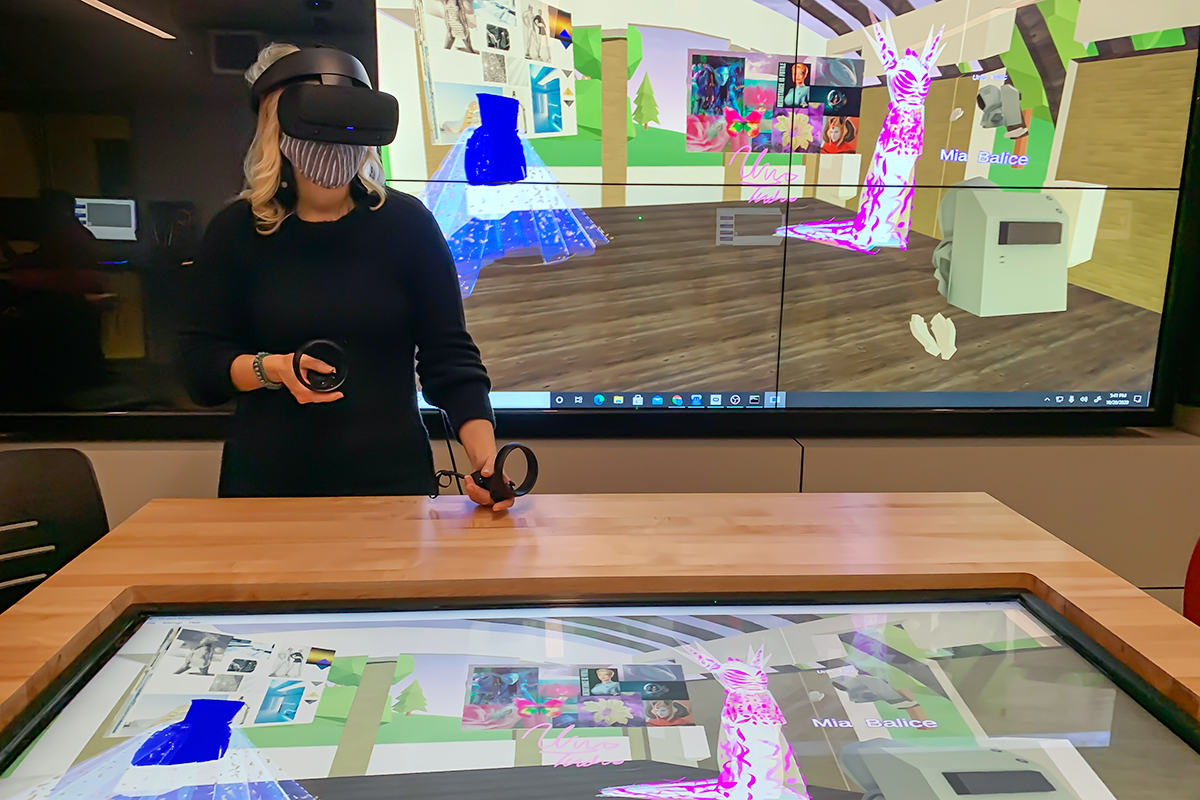
In 2024, the VR Fashion Course did a generative artificial intelligence (GenAI) experimental session where students engaged in a variety of tools as a group. They experimented with design, color, texture, shape, accessories, proportion, and more. Introducing students to new technologies, modeling best practices when using GenAI tools, and being playful while doing so is essential in potential adoption as a new tool that they may use in the future.

Chiara’s project "Digital Fashion Design: Teaching and Learning for a Sustainable Future” received final approval from the Institute for Sustainability, Energy, and Environment (iSEE), and the Vice Chancellor for Student Affairs in Spring 2024.
The project, slated for a 2025 start, aims to enhance the learning experience for students at Illinois by integrating CLO 3D, cutting-edge 3D fashion design software, into our university’s Fashion Concentration in Studio Art. The introduction of this tool will provide a transformative opportunity in our educational offerings, exposing students to emerging tools that emphasize design solutions prioritizing sustainable design from the very inception of fashion creation. This initiative will cultivate a dynamic environment of creativity, learning, and collaboration in partnership with the School of Art and Design, the Center for Innovation in Teaching & Learning (CITL), and the Siebel Center for Design.
The incorporation of CLO 3D will extend its benefits to the College of Fine Arts (FAA) and beyond. In addition to enhancing courses with innovative tools, we envision developing and offering “Zero Waste” workshops to engage students in collaborative projects centered around responsible design and waste reduction in fashion. The classes and workshops are designed to involve both students and faculty, promoting education on sustainable design approaches and fostering cross-disciplinary collaboration across the campus.
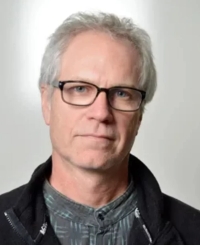 John Toenjes: Exploring dance in VR with Expertise from the Past
John Toenjes: Exploring dance in VR with Expertise from the Past
John Toenjes is Professor, Music Director, and Co-Director of Undergraduate Education at the University of Illinois Department of Dance, and past President of the International Guild of Musicians in Dance. He has written over 30 scores for choreographers, including Lucas Hoving and Joe Goode. Since 2004, he has focused on producing computer-assisted interactive dances such as Inventions Suite (2008 Cleveland Ingenuity Festival), telematic dances such as Timings: An Internet Dance with dancers in Tokyo connected to live avatars, and smartphone-enhanced works such as Kama Begata Nihilum, featuring dancers carrying networked iPads and an audience AR app. In 2014 he established the Laboratory for Audience Interactive Technologies which has designed an app system for live performance called “Mosho.” Dances that integrate Mosho include Critical Mass (2017), and Alternate Reality (2018). He now researches game structures for dance, creating works such as SoundWave Surfing (2020), a dance that pits teams of dancers against each other in an improvisation battle, and a new VR dance adventure game called “Master Dancer.”
John Toenjes, a Department of Dance Professor, is working on an innovative project integrating contemporary dance with virtual reality (VR). His research focuses on enhancing dance performances through technological advancements, including motion capture and VR. The multi-year project, funded by a grant from the Campus Research Board, is named "Master Dancer" and aims to combine dance with gaming elements to create a ground-breaking VR dance adventure experience.
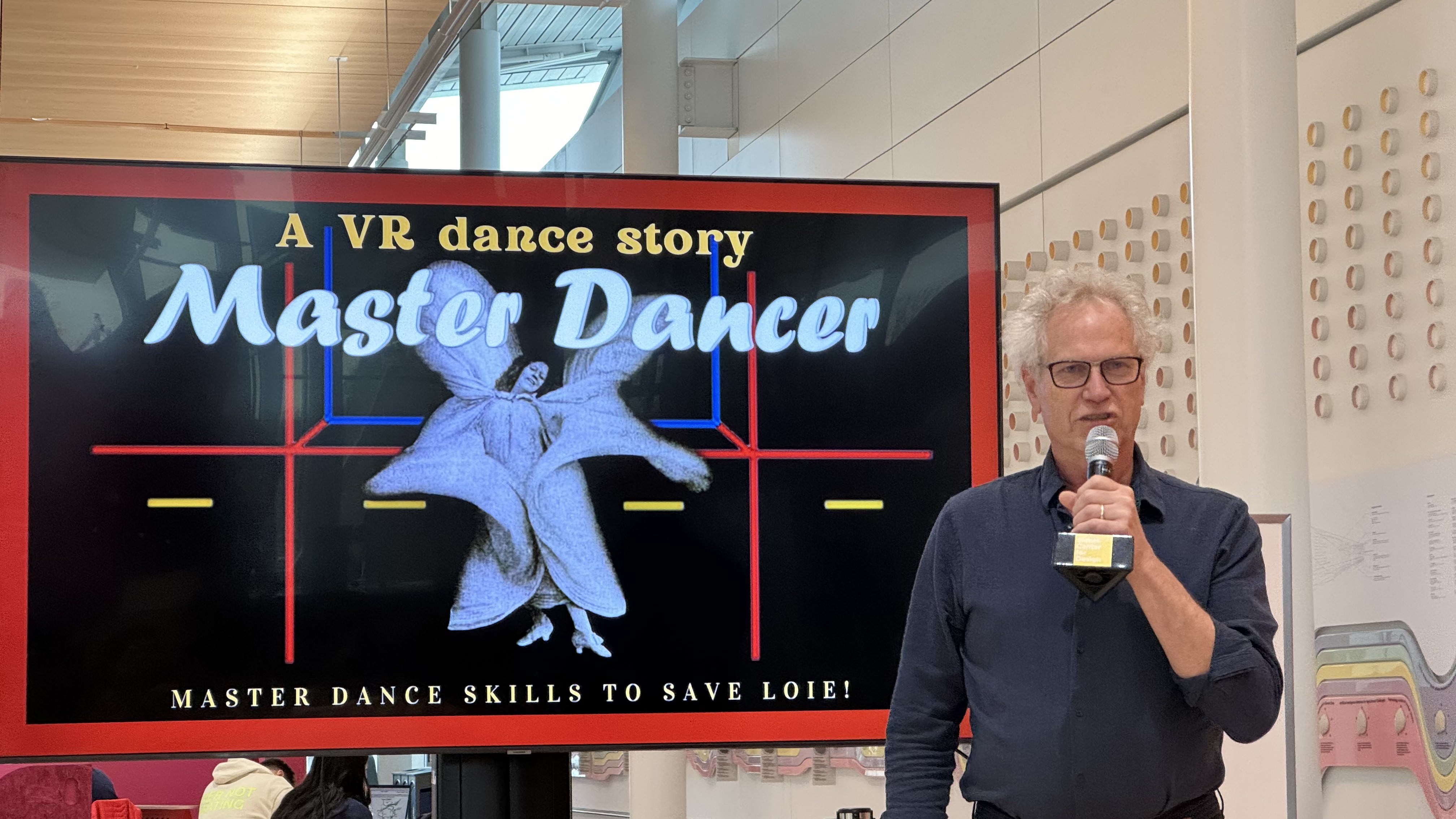
Toenjes' project explores the use of VR to teach dance creatively, inspired by the historical figure Loïe Fuller, known for her pioneering work in theatrical lighting and dance. He is also interested in incorporating Rudolf von Laban's movement analysis into the VR experience to teach dance concepts. The project has faced challenges, including the need for a skilled team, and adapting to rapidly evolving technology, ultimately involving many researchers and experts from the CITL and various university departments.

The current version of the project includes a VR game where users learn dance skills to help restore the virtual presence of Loïe Fuller. Toenjes emphasizes the need for continuous updates and improvements, noting that advancements in VR and AI are transforming the development process.
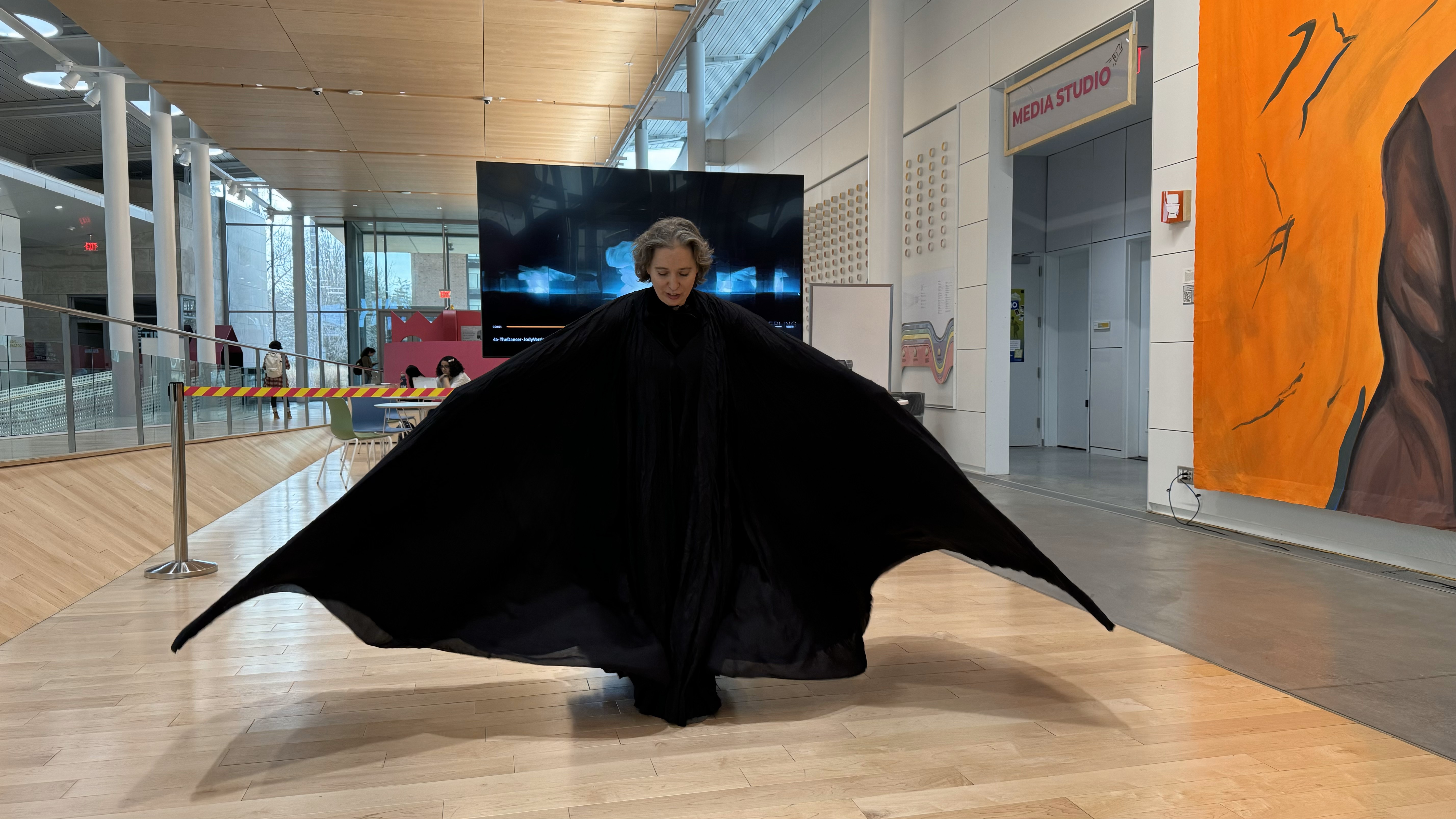
Fulfilling one of CITL’s central missions, this project creates a dynamic and educational experience that blends historical and contemporary dance with cutting-edge technology. Pioneering in its scope and application, it presents both students and instructors with a platform for enhanced learning engagement, serving as an excellent model of intellectual, technological, and artistic pursuits CITL is known for.
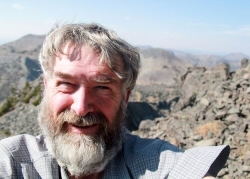 Bob Pahre: Virtual Reality Transforms Environmental Politics Education
Bob Pahre: Virtual Reality Transforms Environmental Politics Education
Dr. Robert Pahre is a professor and the current Department Head of Political Science at the University of Illinois at Urbana-Champaign. His academic journey includes positions at the University of Rochester and the University of Michigan’s Political Science Department and School of Public Policy (now the Ford School). He earned his PhD in Political Science from UCLA and his BA in International Relations and German Studies from Stanford University, where he also played saxophone for the Leland Stanford Junior University Marching Band.
Dr. Pahre's research spans political economy, environmental issues, and the politics of culture and heritage, with a continuing focus on the European Union. He has served as Director of the European Union Center at Illinois. His teaching includes a summer course on the politics of national parks, alternating between various U.S. locations, and an online course on the “Politics of Yellowstone,” which is open to all.
In his free time, Dr. Pahre enjoys hiking, backpacking, and photography, often focusing on outdoor and national park scenes. His work and travel publications can be explored on his research page, while his outdoor photography is showcased on Flickr.
As environmental issues increasingly arise in remote locations, bridging the gap between classroom learning and real-world experiences has been a challenge. Traditional field trips, while effective, are often impractical for distant destinations like the Greater Yellowstone Ecosystem, which can be expensive and difficult to access for many students, especially those with physical limitations. To help alleviate those challenges, a team of University of Illinois educators led by Robert Pahre, professor of Political Science, aims to provide students with a virtual immersion into the Greater Yellowstone Area (GYA), helping them to develop a deeper understanding and emotional connection to this iconic environment. This innovative project utilizes Virtual Reality (VR) and 360° videography to enhance prof. Pahre’s environmental education.
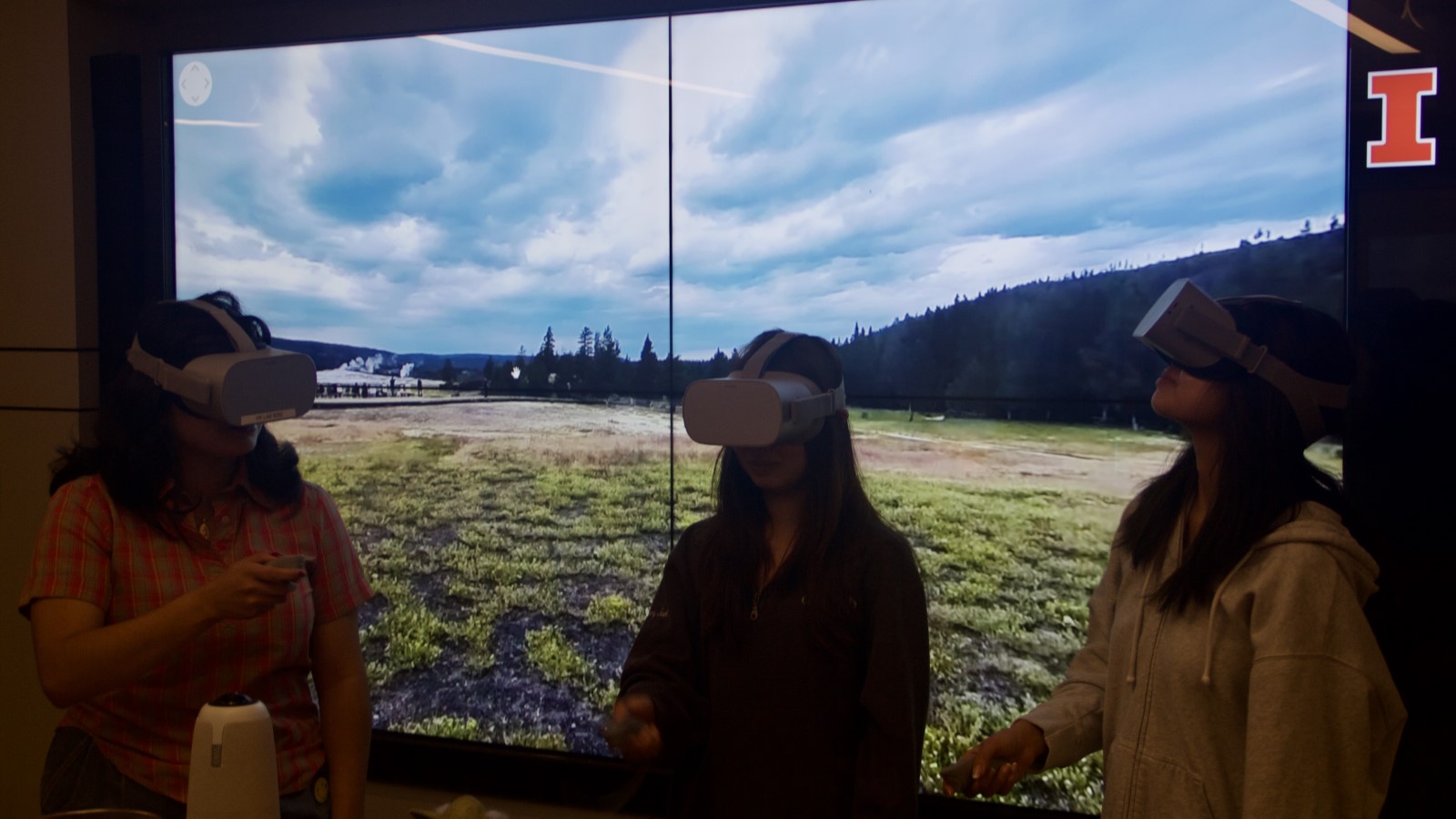
The initiative began with "Winter in the Greater Yellowstone," a VR experience featuring a mix of still images and video, which was introduced during the pandemic. Initially available only to students with personal VR headsets, this program succeeded in creating a meaningful sense of place. Today, the project includes around twenty VR videos and interactive panoramas, integrated into the online course “Yellowstone Online.”
Students also benefit from live VR presentations in the campus VR Lab. These sessions, ranging from 20 to 90 minutes, cover topics such as recreational impacts, virtual backpacking trips, and wilderness assessments. These interactive experiences allow students to engage directly with instructors and peers.
Early findings suggest that "hosted" VR tours, where an instructor guides the virtual experience, offer the strongest emotional connection and sense of place. However, this approach is less scalable as it relies heavily on the presenter's expertise. The project also emphasizes the importance of managing group dynamics within the VR space to ensure a cohesive learning experience.
The VR experience has impressed participants with its high-resolution visuals and realistic soundscapes, including nature sounds like running water and bird songs. Future plans include enhancing these auditory elements further to enrich the virtual environment.
The project has received significant support from the Center for Innovation in Teaching and Learning (CITL) and the Department of Political Science at the University of Illinois, marking a significant step forward in the integration of innovative technology into environmental education.
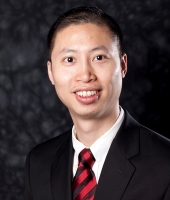 Tony Zhang: New AI Teaching Assistant Revolutionizes University Learning
Tony Zhang: New AI Teaching Assistant Revolutionizes University Learning
Dr. Qingquan (Tony) Zhang is an Associate Professor of Finance at Gies College of Business, University of Illinois Urbana-Champaign. His academic focus centers on corporate finance, financial economics, and empirical finance. Dr. Zhang's research interests delve into corporate governance, risk management, and the implications of financial policy on firm behavior and market efficiency.
He holds a Ph.D. in Finance from the University of Michigan, as well as a Master's Degree in Economics from the University of Chicago and a Bachelor's Degree in Finance from Fudan University. Before joining Gies College of Business, Dr. Zhang gained valuable experience as a researcher and educator at various esteemed institutions.
Dr. Zhang's work has been published in top-tier academic journals and has contributed to the understanding of financial dynamics within firms and markets. His expertise is sought after for insights into financial regulation, corporate decision-making, and the broader economic impacts of financial strategies.
At Gies College of Business, Dr. Zhang is known for his commitment to student development and his engaging teaching style. His courses offer students a deep dive into complex financial concepts, preparing them for successful careers in finance and related fields.
Dr. Tony Zhang has co-founded AristAI, a groundbreaking startup poised to transform university education. AristAI is developing advanced AI teaching assistants designed to provide around-the-clock support to students. Zhang, who pivoted from AI applications in cryptocurrency to focus on virtual teaching assistants, has recognized the potential of AI to assist overburdened instructors and shifted his focus accordingly. The result is AI assistants capable of answering course-related questions, directing students to specific lecture content, and generating insightful analytical reports to help instructors refine their teaching approaches.
The AristAI team, which includes students from top universities such as Michigan, UCLA, and Harvard, has been testing the AI tool with several Illinois instructors and is integrating the technology with campus platforms like Canvas and MediaSpace. The technology is presently commercially available through the company webpage.
Zhang highlights the critical need for proper guidance on AI use, emphasizing that as AI becomes increasingly integral to education, students must learn to use these tools effectively. AristAI’s flexible design allows it to adapt to various teaching methodologies, ensuring that it supports both learning and teaching in a dynamic educational landscape.
